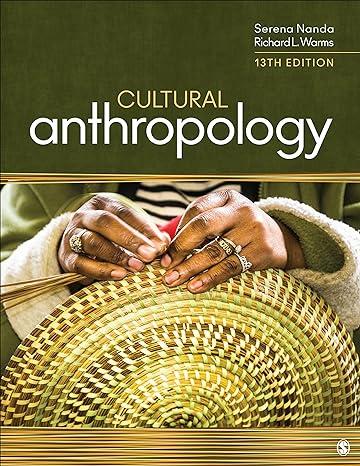Understanding the meaning of a communication is often much more than simply understanding the words that have
Question:
Understanding the meaning of a communication is often much more than simply understanding the words that have been said. The connection between language and the body runs deep. When we talk, we often use our entire bodies. Our hands move, our posture changes, and our eyes and our shoulders are all in motion. Numerous studies show that in some contexts, body signals carry between \(50 \%\) and \(70 \%\) of the information being communicated (Holler et al., 2018, pp. 1900-1908). In a fascinating test of this idea, Rauscher et al. (1996) showed test subjects Road Runner and Wile E. Coyote cartoons. They found that when people were prevented from gesturing with their hands, they had a much more difficult time using words to describe action sequences.
The connection between body movements and meaning has always been a problem for written language. There is no uniform code for expressing irony, ambivalence, anger, or other emotions in writing. Medieval monks tried to get around this problem by illustrating their manuscripts, and teenagers writing postcards in the 1980s filled them with x's and o's representing hugs and kisses. However, as linguist Gretchen McCulloch writes in Because Internet (2019), the problem is much greater now. The rise of smartphones and the Internet has led to an
explosion of written communication. In the past, people may have written letters weekly or more, but in 2018, people around the world were estimated to have sent more than 145 BILLION messages each day! Eighteen- to 24 -year-olds in the United States generally send and receive more than 120 text messages a day (Burke, 2018). How are the missing gestures and other body movements added to this enormous body of texting
There are many answers to the question. Some involve the creative use of capitals or punctuation marks. However, one key way is through the use of emoticons and emojis. When people started to use text messages frequently, they needed a way to indicate whether a text was ironic or serious. Early emoticons filled this role. There were text symbols such as :-) or :-(. At about the same time, kaomoji developed in Japan. Where emoticons show emotion by changing the character used for the mouth, kaomoji often change the character for the eyes. So, happy and sad in kaomoji are ^_^ and ('-), respectively. This difference repeats the point made above previously about Japanese focus on the eyes versus Western focus on the mouth. Pictorial emojis first appeared in the late 1990s. They added to rather than replaced emoticons and emojis.
Questions
1. What new emojis would you like to see created?
2. How often do you use emojis? Why do you choose to communicate in emojis or add them to texts rather than using more conventional language?
3. McCulloch compares repeated emojis to gestural beats. If you send or receive repeated emojis, what do you think when you send or receive them?
4. How important is it to you to send emojis that match your skin tone Why
Step by Step Answer:






